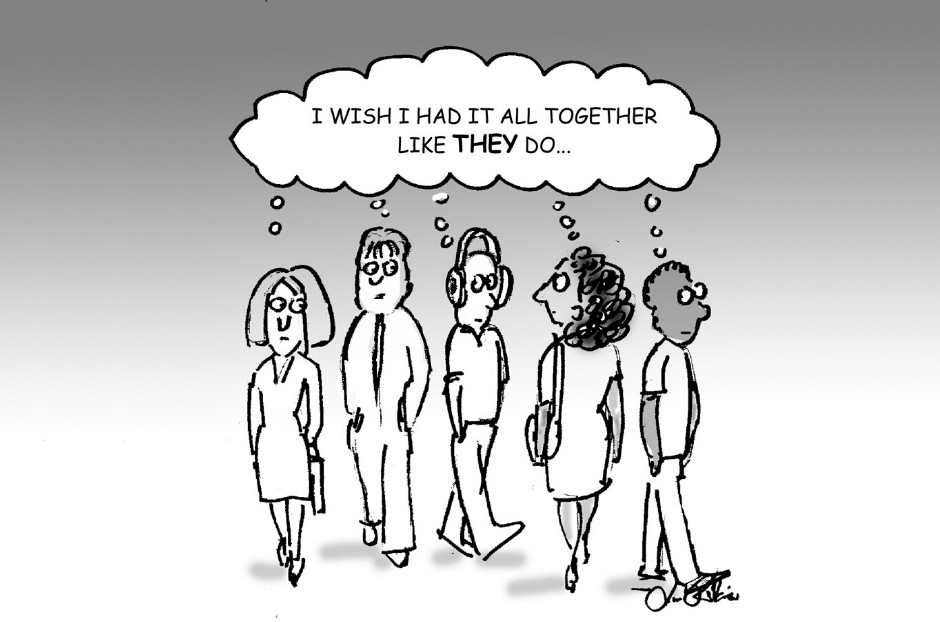I remember the day I was assigned a big enterprise-level transformational project – strategic, high-stakes, and C-suite visible. I was thrilled, prepared, and yes, a bit nervous. But when I shared the news with a colleague expressing both my excitement and my nervousness, her response caught me off guard: “Sounds like you’ve got imposter syndrome.”
I paused. Imposter syndrome? That didn’t feel right. I didn’t feel I was unqualified. I could rise to the challenge, even with a learning curve ahead. I wasn’t faking anything, I was growing. Still, that phrase clung to me. It planted a subtle question: What if I really don’t belong here?
The Power of Language and Identity Anchors
In psychology, there is a term called the anchoring effect – our tendency to rely too heavily on the first piece of information we’re given. Labels can act the same way. When someone names your uncertainty “imposter syndrome,” it can become the lens through which you view your journey.
And it’s not a neutral lens. The word “imposter” implies deception, suggesting you’ve tricked people into believing you’re more capable than you actually are. It creates a quiet, persistent stress that one day you’ll be “found out.” Instead of recognizing growth, you brace for exposure.
In her article Why Everyone Feels Like They’re Faking It (The New Yorker, 2023), Leslie Jamison explores this tension, writing that the imposter phenomenon “names the gap that persists between the internal experiences of selfhood… and the imperative to present a more coherent, composed, continuous self to the world.” That pressure to perform doesn’t just drain energy – it chips away at our sense of belonging.
It’s Not You – It’s the Feeling of Not Belonging
Here’s what we often overlook: self-doubt doesn’t always originate within us. Sometimes, it’s a rational response to environments that define success narrowly and leave little room for learning or difference. When the leadership model is rigid, anyone who doesn’t naturally fit the mold may question whether they truly belong, even when highly qualified.
And here’s something even more critical: everyone experiences confidence gaps. According to research, more than 70% of people (women higher than men) will feel like an imposter at some point in their career. This isn’t a syndrome; it’s a shared human experience. It shows up in first-time managers, seasoned executives, and entrepreneurs alike. Feeling uncertain doesn’t mean you’re inadequate. It means you’re stretching.
In Stop Telling Women They Have Imposter Syndrome (Harvard Business Review, 2021), authors Ruchika Malhotra and Jodi-Ann Burey argue that “imposter syndrome directs our view toward fixing individuals at work instead of fixing the places where people work.” What if we stopped asking whether we belong—and started asking what it looks like to normalize growth?
Let’s Reframe It: You’re in a Confidence Gap
Let’s call it what it really is: a confidence gap. Not a character flaw. Not a sign you’re faking it. Just a natural, temporary stretch zone on your growth curve.
Reframing the experience, we shift from “I’m not enough” to “I’m learning, and I’m growing.” That mindset doesn’t minimize the challenge; it gives you agency and self-compassion.

Three Steps to Bridge the Confidence Gap
- Recognize you’re in growth mode. You’re not faking it—you’re learning. Reframe “I don’t belong here” into “I’m building the muscle to thrive here.”
- Gather the evidence. You can keep track of your wins, encouraging feedback, and past accomplishments. When doubt whispers, remind yourself of what’s real.
- Normalize the learning process. Mistakes aren’t proof of inadequacy—they’re part of becoming more capable. Separate fear from failure. Fear says, “Don’t mess up or they’ll know you don’t belong.” Growth says, “Every stumble is part of becoming more confident.” Foster environments where it’s safe not to know everything on day one.
Let’s Rewrite the Narrative
You’re not an imposter. You’re a leader in transition. This isn’t a syndrome to cure – it’s the stretch of growth to embrace.
Let’s stop pathologizing progress. Let’s discuss confidence gaps as a universal aspect of leadership. And let’s cultivate cultures where belonging isn’t something to earn—it’s something we offer by default.
You’ve earned your place – now permit yourself to grow in it.
Note: In American English, both “imposter” and “impostor” are considered correct spellings of the same word, with “imposter” being more common
The views and opinions expressed in this content are my own and do not necessarily reflect the views or positions of any organization I am affiliated with.